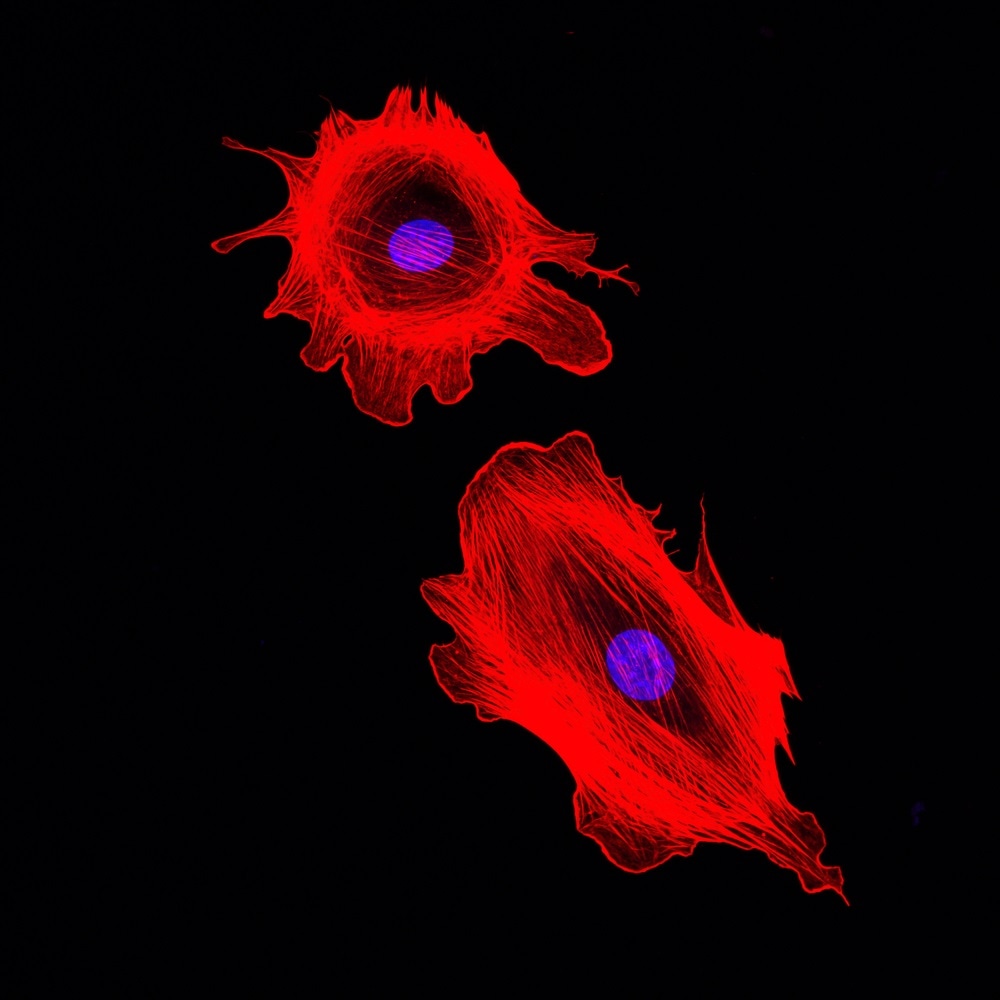A tiny chemical modification on one of the most abundant and important proteins in cells, actin, has long been somewhat mysterious, its function not fully understood, but scientists from the Perelman School of Medicine at the University of Pennsylvania have now taken a big step towards clearing up the mystery.
The scientists, who report their discovery on the post-translational modification of actin in Science Advances, believe their discovery sheds light on the construction of life--similar to understanding how a star is born or a black hole is formed. This fundamental information can potentially inform research into a broad range of diseases, including muscle-weakness and immune deficiency syndromes caused by defects or failure in actin.
 Image Credits: DrimaFilm / Shutterstock.com
Image Credits: DrimaFilm / Shutterstock.com
The research shows how actin is modified, and should accelerate further research on how actin works and is regulated in cells. The researchers used X-ray crystallography and other advanced techniques to reveal the atomic-scale structure of actin as it is being modified by a partner enzyme during the attachment of a cluster of atoms, called an acetyl group, at the start of the chain of amino acids that forms the protein.
The modification, called N-terminal acetylation, can occur on the vast majority of human proteins and is thought to have important biological functions. However, in the case of actin those functions have not been entirely clear.
The findings also illuminate the general biology of N-terminal acetylation. In fact, this is the first time the atomic-scale structure of any protein as it is being modified in this manner has been determined.
"These are fundamental findings that extend our understanding of how actin works and also how N-terminal acetylation works," said study senior author Roberto Dominguez, PhD, the William Maul Measey Presidential Professor of Physiology at Penn.
Actin's importance is underscored by the fact that in mammalian cells it is the most abundant protein in the cytoplasm, the space outside the nucleus. It is best known for forming cable-like structures called filaments, which make up much of the supportive "skeleton" of cells, and also play key roles in cell division and in cells' ability to move about in tissues.
N-terminal acetylation can occur on actin, as it does on more than 80 percent of human proteins, and appears to help regulate actin's ability to form filaments. However, the precise functions of this modification have never been clear, and scientists--a team led by Dominguez and a team of collaborators at the University of Bergen in Norway led by Dr. Thomas Arnesen--discovered the enzyme that catalyzes actin N-terminal acetylation only in 2018.
That enzyme, NAA80, is one of seven enzymes that perform N-terminal acetylation on human proteins, but it is special because it works just on actin. In the new study, Dominguez and Arnesen and their colleagues followed up their discovery of NAA80 by exploring how it selectively acts on actin among thousands of other proteins in the cell.
One of their key findings was that NAA80 does not recognize and acetylate actin when the protein is assembled into filaments. It does acetylate actin when it exists as a separate molecule, called a monomer.
However, the most efficient N-terminal acetylation occurs when actin is bound to another protein called profilin--a known partner of actin, and one that is closely involved in actin's formation of filaments and like actin is also very abundant in the cell.
"It was a surprise to us to find that this protein, NAA80, appears to have evolved to recognize not actin alone but the profilin-actin complex," Dominguez says. "It suggests that profilin has a role as a 'chaperone' that allows actin to be N-terminally acetylated prior to filament formation."
The team used X-ray crystallography to build an atomic-scale image of this three-way actin-profilin-NAA80 complex. It is the first time scientists have been able to resolve the atomic structure of an N-acetyltransferase in the act of adding an acetyl group to another protein.
The achievement revealed how the special structure of NAA80 allows it to specifically recognize and acetylate all six variants or "isoforms" of actin that occur in human cells--even though the site on the protein where these actin variants differ is also the site that NAA80 acetylates.
The structural and functional features we uncovered in this study also explain how NAA80 performs N-terminal acetylation only on actin and not on other proteins."
Roberto Dominguez, William Maul Measey Presidential Professor of Physiology at Penn
The study represents a basic advance in cell biology but, in general, as scientists develop a more detailed picture of actin's functions and dynamics in cells, they will better understand the many disorders in which those functions and dynamics are disrupted. These include muscle and heart function, tissue development, and the movement of numerous pathogens and cancer cells during metastasis.